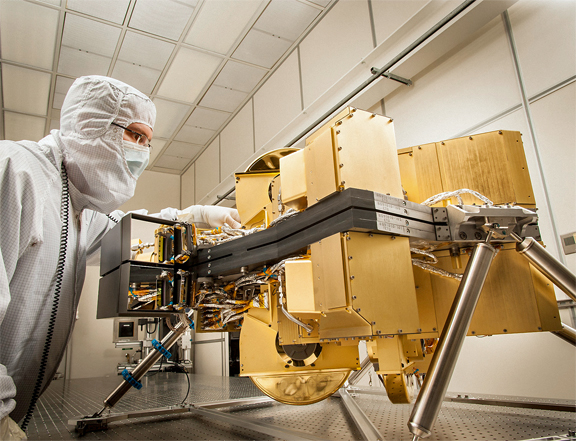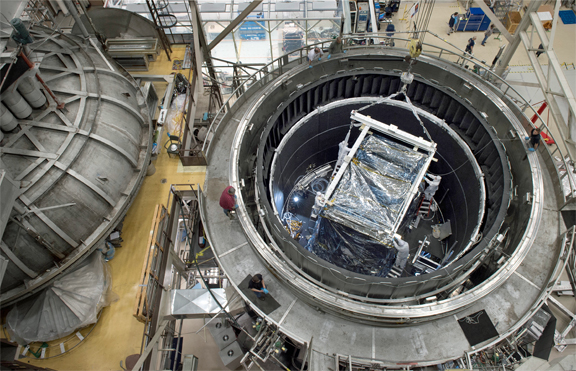
[SatNews] The Near Infrared Camera (NIRCam) instrument Lockheed Martin [NYSE: LMT] helped develop for NASA’s next deep space telescope surpassed expectations during tests in late 2014.

NIRCam successfully completed its first integrated testing with NASA's James Webb Space Telescope. The optical sensor will see farther into the cosmos and further back in time than any other instrument.
Photo courtesy of Lockheed Martin.
NIRCam will see farther into the cosmos and further back in time than any other instrument. Scientists are preparing NIRCam for new trials beginning this year. Produced under contract with the University of Arizona, NIRCam is the primary science camera on the James Webb Space Telescope (JWST) and it also functions as the sensor that is used to align the observatory’s primary mirror.
NIRCam performed significantly better than requirements during the first integrated, cryogenic testing program at Goddard Space Flight Center, Maryland. In April, NASA installed the instrument alongside others in the Integrated Science Instrument Module (ISIM), which finished cryogenic and vacuum testing late last year. The ISIM is preparing for vibration testing, scheduled to occur in early 2015. Unlike Hubble’s single monolithic primary mirror, JWST’s primary mirror is made up of 18 individual, adjustable segments that will be aligned in space. NIRCam’s performance is essential to the telescope’s success.

NIRCam, the primary science camera of the James Webb Space Telescope, emerges as part of the Integrated Science Instrument Module (ISIM) during a deep freeze test in late 2014.
Photo is courtesy of NASA.
“We designed NIRCam to stringent optical and environmental requirements so it can deliver images from the early origins of the universe,” said Alison Nordt, NIRCam program manager at Lockheed Martin. “JWST is an infrared observatory, requiring all of the optical components to operate at a cryogenic temperature under 40 Kelvin, which is less than 40 degrees above absolute zero, the temperature at which all atomic motion ceases. That’s a significant challenge when you’re building low-distortion optical mounts, aligning optics at room temperature and designing mechanisms to move precisely.”
NIRCam is one of many precision optical payloads Lockheed Martin designs, develops and produces for scientific and commercial customers, NASA and other government organizations.
The Lockheed Martin infosite may be reached at http://www.lockheedmartin.com/

